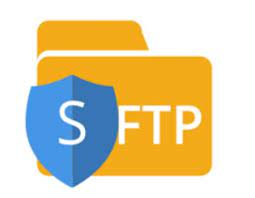SFTP is a secure file transfer protocol used popularly in Linux to transfer files. It is much better than normal FTP as it encrypts data during transmission and prevents it from being deciphered by network sniffers. SFTP runs over SSH protocol to use a secure connection, and is also a part of popular FTP services such as FileZilla, WinSCP, FireFTP, etc. In this article, we will look at the top SFTP command examples to work with SFTP. You can keep this list handy for regular reference.
Top SFTP Command Examples
Here are top 10 SFTP command examples for your reference.
1. Connect to SFTP
Here is the syntax to connect to your SFTP server.
$ sftp username@ip_address
Here is an example to connect to SFTP. Once you enter the command to connect to SFTP server, you will be prompted for password. On entering the correct password, you will be logged into SFTP with sftp> prompt as shown below.
$ sftp ubuntu@54.43.32.21 Connecting to 54.43.32.21... ubuntu@54.43.32.21's password: sftp>
2. Get Help
Once you have logged into SFTP, you can easily get help information such as available commands using ? key.
sftp> ? Available commands: cd path Change remote directory to 'path' lcd path Change local directory to 'path' ...
3. Find out present working directory
If you want to find out your present working directory there are two available commands – lpwd for local working directory and pwd for remote working directory.
Here is the command to find out local present working directory.
sftp> lpwd
Here is the command to find out remote present working directory.
sftp> pwd
4. Listing Files
Here too, there are two commands to list files – ls to list files in remote machine and lls to list files on local machine.
Here is an example to list files on remote machine.
sftp> ls
Here is the command to list files on local machine.
sftp> lls
5. Upload File
You can upload file to SFTP server using put command. Here is an example to upload file. You need to mention file name or path after put command. If you only mention file name and not full file path then sftp will look for the file in your present working directory.
$ sftp> put data.txt Uploading data.txt to /ubuntu/data.txt
6. Upload Multiple Files
You may also use wildcard characters like asterisk (*) to upload multiple files. But if you are uploading multiple files, use mput command.
sftp> mput *.txt
7. Download File
You can download single file using get command.
sftp> get data.txt Fetching /ubuntu/data.txt to data.txt
If you want to change the name of downloaded file, just specify its new name at the end
sftp> get data.txt new_data.txt
8. Download Multiple Files
Similarly, you can download multiple files using mget.
sftp> mget *.txt
9. Change directory
You can change local directory using lcd command and remote directory using cd command.
Here is the command to change remote directory.
sftp> cd test
Here is the command to change local directory.
sftp> lcd data
10. Create Directory
You can create local directory using lmkdir and create remote directory using mkdir commands. Here is the command to create remote directory.
sftp> mkdir test
Here is the command to create local directory.
sftp> lmkdir test
11. Remove remote files & directory
You can rm command to remove remote files and rmdir command to remove remote directories. Please note, when you use rmdir command, the remote directory must be empty for deletion to happen.
$ rm data.txt $ rmdir files
12. Exit SFTP Shell
If you want to temporarily exit SFTP shell to run Linux commands just enter bang (!) symbol. You will be sent to a Linux shell where you can run Linux commands. Once you are done, enter exit command to return back to SFTP shell.
sftp> ! ubuntu$ date Mon Aug 23 03:33:26 UTC 2021 ubuntu$ exit sftp>
If you want to permanently exit SFTP shell enter exit, bye or quit command.
In this article, we have learnt many different commands to work with SFTP. Basically, most of these commands are similar to the ones used in Linux shell/terminal. E.g cd command changes directory. For most of these commands there are two counterparts – one for local machine and the other for remote machine. The remote command is similar to the Linux command (e.g cd changes remote directory), and its local counterpart can be obtained by prefixing ‘l’ (letter el) to the remote command (e.g lcd changes local directory).
Also read:
How to Use Journalctl command in Linux
How to Grep Log File Within Specific Time Period
How to Password Protect Folders in Linux
Related posts:
How to Lock & Unlock Users in Linux
How to Sort Files by Size in Linux
How to Record & Replay Terminal Session in Linux
How to Improve Ubuntu Speed & Performance
How to Use Journalctl Command in Linux
How to Install HAProxy in Ubuntu
How to Generate & Verify MD5 Hash of File in Linux
How to Count Number of Files in Directory in Linux

Sreeram has more than 10 years of experience in web development, Python, Linux, SQL and database programming.
